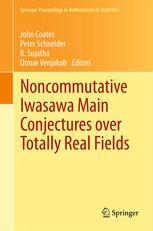

Most ebook files are in PDF format, so you can easily read them using various software such as Foxit Reader or directly on the Google Chrome browser.
Some ebook files are released by publishers in other formats such as .awz, .mobi, .epub, .fb2, etc. You may need to install specific software to read these formats on mobile/PC, such as Calibre.
Please read the tutorial at this link: https://ebookbell.com/faq
We offer FREE conversion to the popular formats you request; however, this may take some time. Therefore, right after payment, please email us, and we will try to provide the service as quickly as possible.
For some exceptional file formats or broken links (if any), please refrain from opening any disputes. Instead, email us first, and we will try to assist within a maximum of 6 hours.
EbookBell Team

4.0
96 reviewsThe algebraic techniques developed by Kakde will almost certainly lead eventually to major progress in the study of congruences between automorphic forms and the main conjectures of non-commutative Iwasawa theory for many motives. Non-commutative Iwasawa theory has emerged dramatically over the last decade, culminating in the recent proof of the non-commutative main conjecture for the Tate motive over a totally real p-adic Lie extension of a number field, independently by Ritter and Weiss on the one hand, and Kakde on the other. The initial ideas for giving a precise formulation of the non-commutative main conjecture were discovered by Venjakob, and were then systematically developed in the subsequent papers by Coates-Fukaya-Kato-Sujatha-Venjakob and Fukaya-Kato. There was also parallel related work in this direction by Burns and Flach on the equivariant Tamagawa number conjecture. Subsequently, Kato discovered an important idea for studying the K_1 groups of non-abelian Iwasawa algebras in terms of the K_1 groups of the abelian quotients of these Iwasawa algebras. Kakde's proof is a beautiful development of these ideas of Kato, combined with an idea of Burns, and essentially reduces the study of the non-abelian main conjectures to abelian ones. The approach of Ritter and Weiss is more classical, and partly inspired by techniques of Frohlich and Taylor. Since many of the ideas in this book should eventually be applicable to other motives, one of its major aims is to provide a self-contained exposition of some of the main general themes underlying these developments. The present volume will be a valuable resource for researchers working in both Iwasawa theory and the theory of automorphic forms.